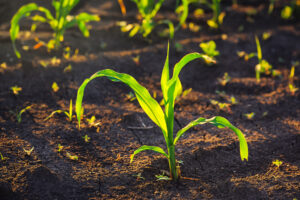Growing key biomethane crop on peat emits 3 times more CO2, study finds

The researchers also estimate the area of UK peatland used for cultivating maize, which is then put through an anaerobic digester to produce biomethane, has tripled since 2015.
But they say the emissions resulting from draining these carbon-rich wetlands for agricultural use have been widely overlooked.
The analysis, funded by the Department for Environment, Food and Rural Affairs (Defra), focuses on maize and the UK, but the study team points out that any cultivation on deep-drained peat will result in large amounts of greenhouse gas emissions.
Its significant findings highlight the need to consider soil carbon losses relating to all bioenergy crops grown on drained peat, anywhere in the world, in order to enable better decision-making over green energy.
“Biomethane is an important renewable energy source, but it seems unwise to use drained peatland primarily for generating bioenergy in areas where this leads to higher CO2 emissions than the fossil fuel it replaces,” says professor Chris Evans of UKCEH, who led the research, published in Nature Climate Change.
Draining our carbon stores
While the burning of any gas to produce energy emits greenhouse gases, the principle behind the production of biomethane is that the carbon released during combustion was recently removed from air via photosynthesis, so does not add additional CO2 into the atmosphere.
However, significantly more carbon is emitted from drained peatlands than is avoided by not using natural gas, according to the study.
This is because drainage of these wetlands to enable crops or trees to grow releases carbon that has been locked up in their soils for hundreds of years.
This released carbon is exposed to atmospheric oxygen, forming CO2 and resulting in significant amounts of additional greenhouse gas.
While every cubic metre of natural gas burned emits the equivalent of 2kg of CO2, UKCEH’s field flux measurements show the soil carbon lost through cultivating maize for biogas production on drained peatland results in emissions of up to 6kg per cubic metre of biomethane produced.
That figure does not include the additional greenhouse gas emissions resulting from application of fertilisers on maize fields, harvesting and transport of the crop, or from production of the biomethane.
Big increase in production
The study estimates UK area of drained peat soils for all maize cultivation rose from around 6,000 ha in 2015 to over 11,000 ha in 2021, while the proportion of the crop grown for bioenergy, as opposed to food, increased from 20% to 34% – representing a three-fold increase overall.
The researchers point out their findings do not imply that all forms of bioenergy production on drained peat soils will lead to increased emissions. For example, growing dedicated biomass crops on agricultural peatlands managed with higher water levels – paludiculture – is a potentially promising method of mitigating climate change.
Professor Evans says that compared to taking land out of food production entirely for biomethane production, it is less damaging to use maize as a ‘break crop’ - plants included within crop rotation systems to reduce the risk of weeds, pests and diseases. This would have commercial value and help to offset some of the CO2 emissions associated with food production on peat.
The researchers add that maize grown on a mineral soil has less impact on the long-term soil carbon balance, and the overall process on these non-peat areas may therefore be more effective in reducing emissions.
Improving decision-making
UK production of biomethane has increased four-fold since 2000, largely driven by government financial support for biogas production to support energy sector decarbonisation, including the Green Gas Support Scheme and prior to that, the Renewable Heat Incentive.
Dr Rebecca Rowe of UKCEH, a co-author of the study, says: “The transition to net zero won’t be completely smooth. Along with the successes, there will be failures and unintended consequences.
“Our role, as scientists, is to support the government, land managers and industry by providing them with the best up-to-date knowledge on the impacts of their actions so they can make informed decisions about energy crop production and land use.
“This is about working together to ensure a sustainable future.”
















